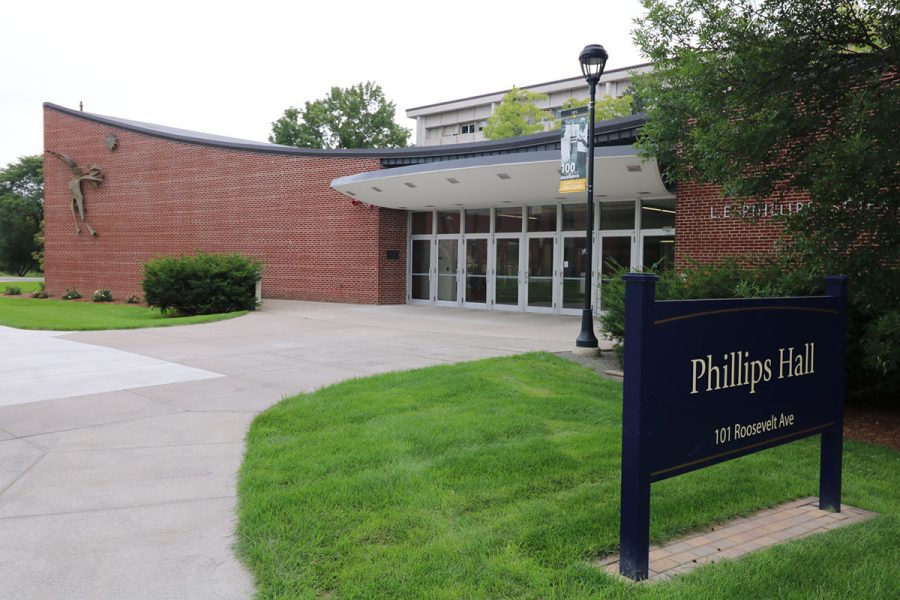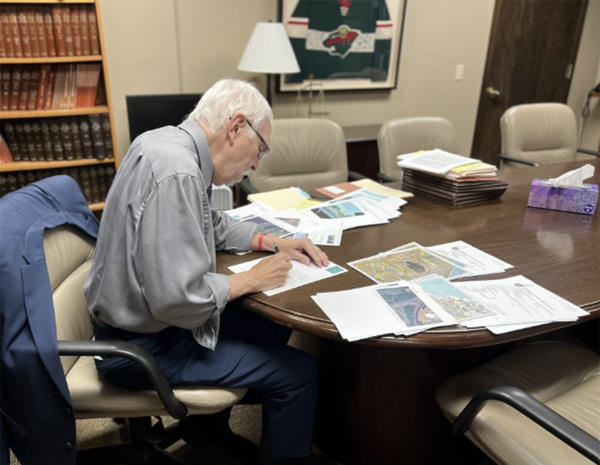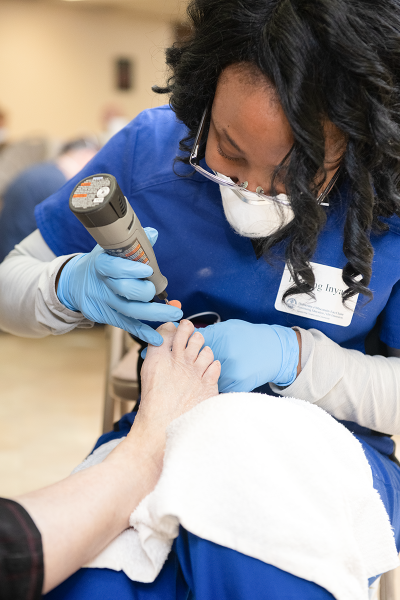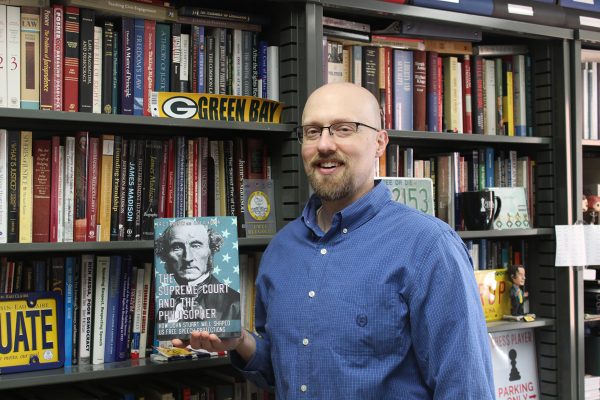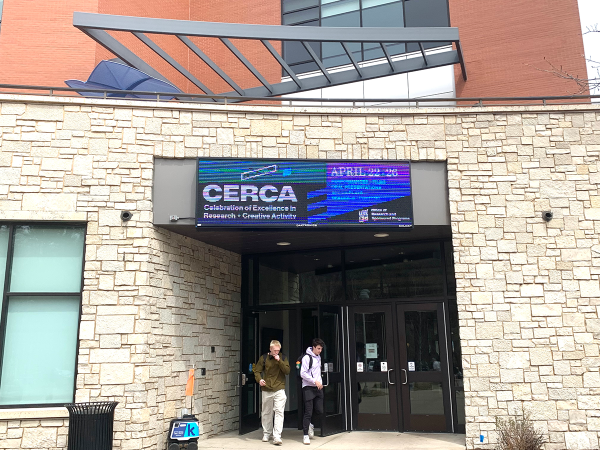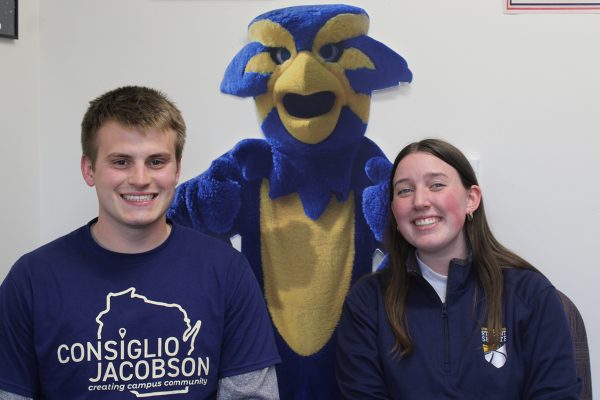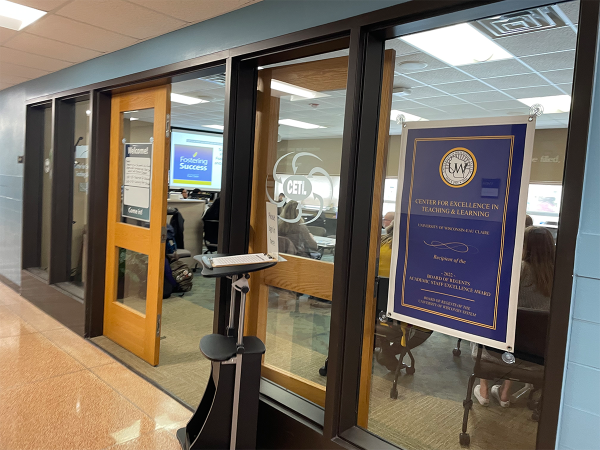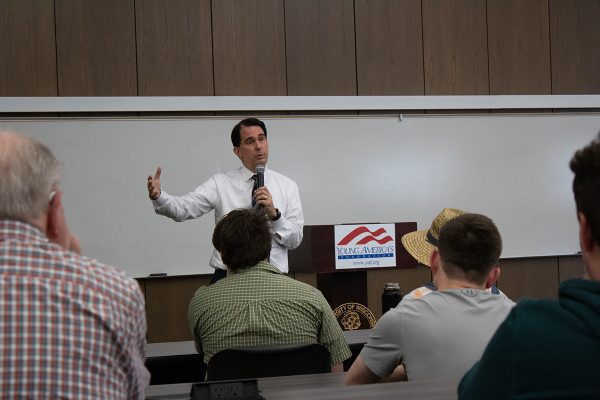New Science and Health Sciences Building passes first step in approval process
Biennial capital budget proposal, with funding for new science and health sciences building, recently approved by UW-System Board of Regents
Photo by Sam Farley
Philips Hall has been a part of UW-Eau Claire campus since 1963.
A simple stroll around the UW-Eau Claire campus makes it clear that the university is in a transitional state. Construction sites are scattered throughout both upper and lower campus, and the symphonies of various trucks and tools blare as students hustle to their classes.
The changes coming to UW-Eau Claire go beyond what the eye can see and what the ear can hear. According to the UW-Eau Claire website, on Aug. 23, a biennial capital budget proposal, which includes funding for a new UW-Eau Claire Science and Health Sciences Building, was approved by the UW-System Board of Regents.
The approved budget proposal allots a total of $256.15 million to construct the new hall – $109 million will be allocated to the 2019-2021 biennium and $147.15 million for the 2021-2023 biennium.
Assistant Chancellor for Facilities and University Relations Mike Rindo said the new Science and Health Sciences Building, which has been a topic of discussion since 2008 and will replace the outdated Phillips Science Hall, is a part of the university’s 2010-2030 Master Plan.
Some other aspects included in the 2010-2030 Master Plan — completed and uncompleted — include Davies Student Center (completed in 2012), Centennial Hall (completed in 2014), the Pablo Confluence Center (completed in 2018), Garfield Avenue (ongoing), the Karlgaard Towers renovations (ongoing) and a new residence hall (ongoing).
The recent budget approval is the first of many steps in the approval process, Rindo said.
Many factors — structural and functional — contribute to the need to tear down Phillips Hall and start anew, Rindo said.
“Phillips is 55 years old; it was constructed in 1963 when science education was very, very different,” Rindo said. “It has a lot of single-use labs, not a lot of collaborative spaces. … It still has all the original windows, the roof leaks badly, it’s overcrowded.”
A large focus of the construction is the desired research collaboration with Mayo Clinic, Rindo said.
Rindo said the new Science and Health Sciences Building — which will be replacing the Putnam and Katherine Thomas residence halls — won’t negatively affect university housing. In fact, because of planned residence hall renovations and constructions, Rindo said bed numbers will be up by about 33% when all is said and done.
Additionally, Rindo said that since the two lower campus housing options will be replaced, steps have been taken to keep housing handicap-accessible. Alternatives include Aspenson Mogenson and additional housing options on State Street.
Professor Harry Jol, who has been a part of the Geography and Anthropology department since 1996, said that an up-to-date science building with new teaching labs, research labs and places for graduate students would allow for more dynamic teaching and variety. He said he sees it as vital to UW-Eau Claire’s success.
“Having traveled around different parts of this country as well as internationally, I’ve noticed there are a lot of new science buildings being built,” Jol said. “A lot of universities are attracting a lot of students by having these new science buildings, and by not having one, we’re losing students.”
A major stress throughout the upcoming process should be transparency, Jol said. It’s important for students, faculty and stakeholders to be included in the conversation regarding the new science hall.
In the next step of the approval process, according to the UW-Eau Claire website, the biennial budget request that includes the new science building will be sent to the state Department of Administration. Here, it will be considered part of the governor’s executive budget. Information regarding the governor’s executive budget will be released sometime this January or February, Rindo said.
If all goes as planned, Rindo said the design process for the new Science and Health Sciences Building will begin in 2019, with construction beginning in 2021 and finishing up in 2023.
“If we can get a modern, state-of-the-art science and health sciences hall, it really will open up many more opportunities for our students and faculty and our collaboration with Mayo,” Rindo said. “It’s not only good for the campus, it’s good for our region.”
Reisdorf can be reached at [email protected].

Taylor Reisdorf is a graduate student in the English program who revels in both telling and engaging with compelling stories. This is her seventh semester with The Spectator. She prides herself in her adaptability and desire to continuously experience, learn, and appreciate new things.

